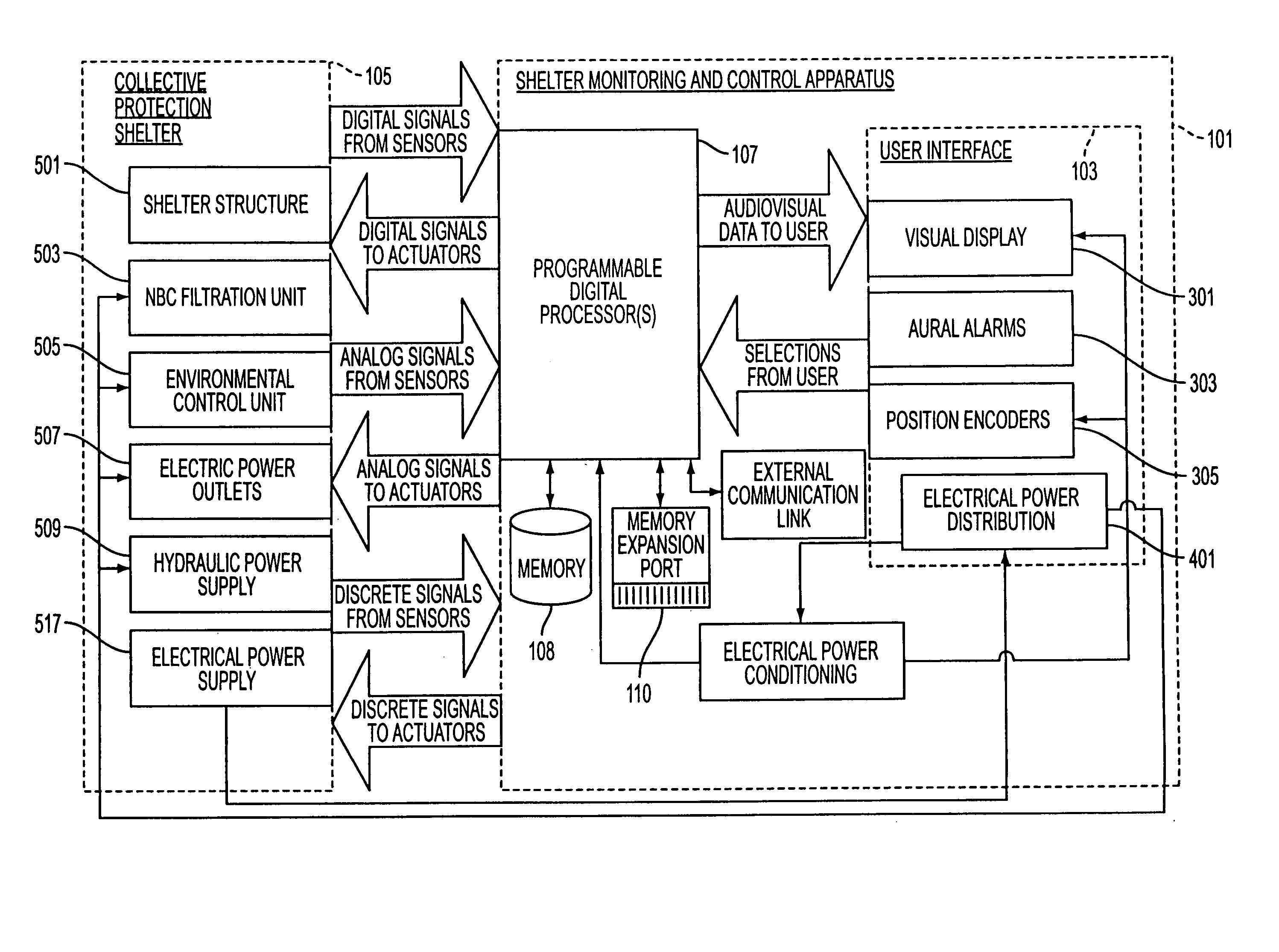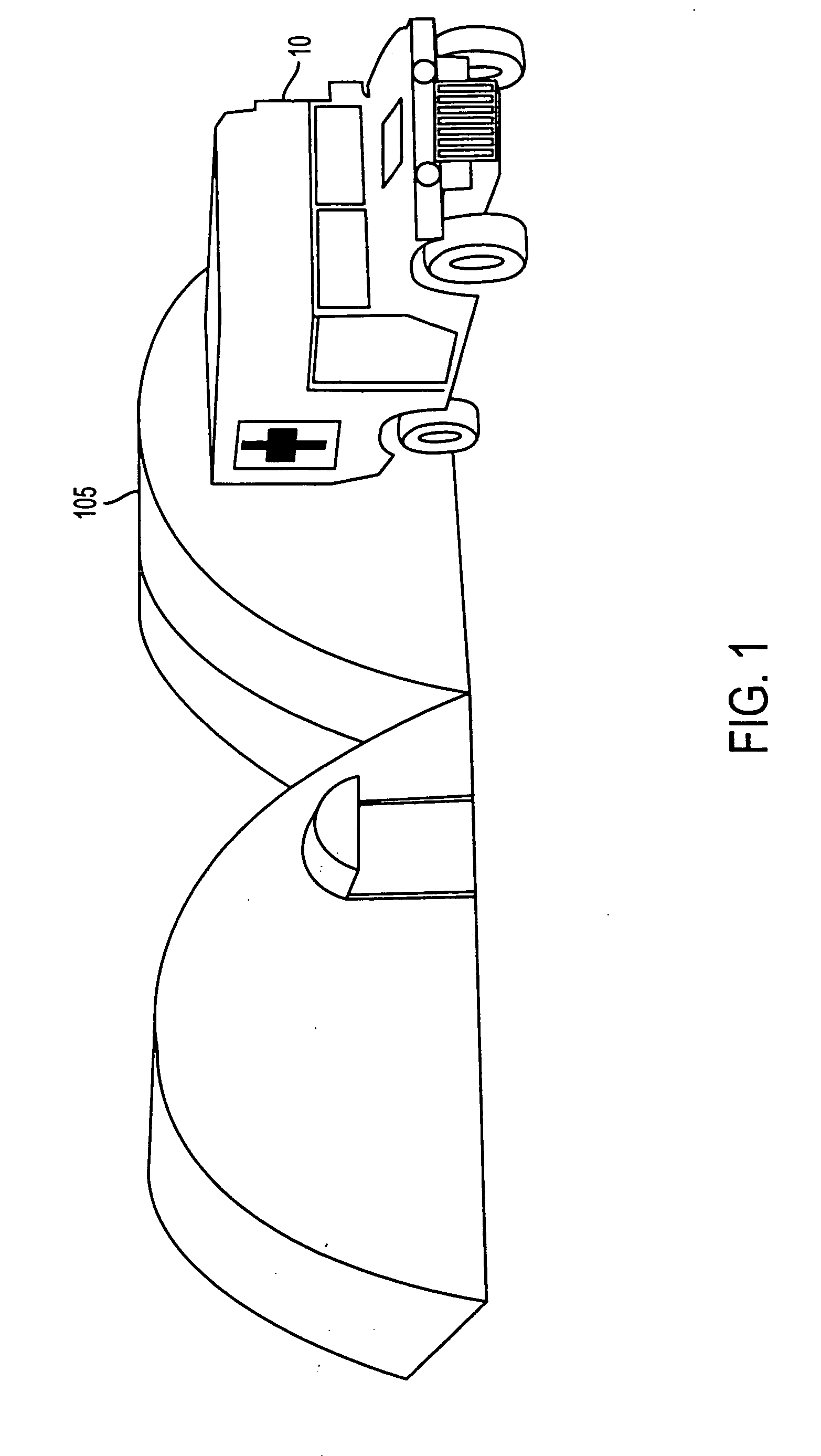Apparatus for monitoring and controlling an isolation shelter and providing diagnostic and prognostic information
a technology for monitoring and controlling an isolation shelter and equipment, applied in the field of systems, apparatus and methods for managing an isolation environment, can solve the problems of straining the emergency response capability of a populated area, affecting the safety of the environment, so as to simplify equipment maintenance and availability, reduce the volume, weight and cost of the controller
- Summary
- Abstract
- Description
- Claims
- Application Information
AI Technical Summary
Benefits of technology
Problems solved by technology
Method used
Image
Examples
Embodiment Construction
[0037] It is desirable to have a controller for an isolation environment, such as that inside of a collective protection shelter, which can provide for diagnostic and prognostic capability to support condition-based maintenance (CBM) and provide a user the ability to maintain the integrity of the shelter. These controllers will generally be able to prevent the failure of components without requiring the significant logistics support required by TBM and other situational notification controllers.
[0038] In order to be able to carry out monitoring for diagnostics and prognostics purposes, the controller will generally need to perform mathematical operations, trend analysis and be able to store and manipulate sensor data autonomously or upon request from the user. As items deteriorate over time, determining what a component has been doing is often the best way to predict when it will reach a threshold where it needs to be repaired or replaced.
[0039] A collective protection shelter is ...
PUM
 Login to View More
Login to View More Abstract
Description
Claims
Application Information
 Login to View More
Login to View More - R&D
- Intellectual Property
- Life Sciences
- Materials
- Tech Scout
- Unparalleled Data Quality
- Higher Quality Content
- 60% Fewer Hallucinations
Browse by: Latest US Patents, China's latest patents, Technical Efficacy Thesaurus, Application Domain, Technology Topic, Popular Technical Reports.
© 2025 PatSnap. All rights reserved.Legal|Privacy policy|Modern Slavery Act Transparency Statement|Sitemap|About US| Contact US: help@patsnap.com



